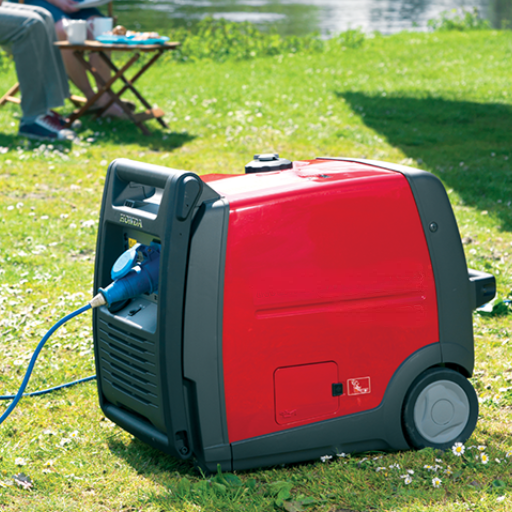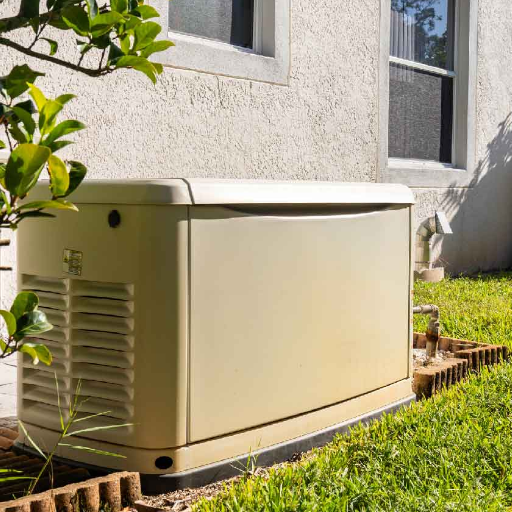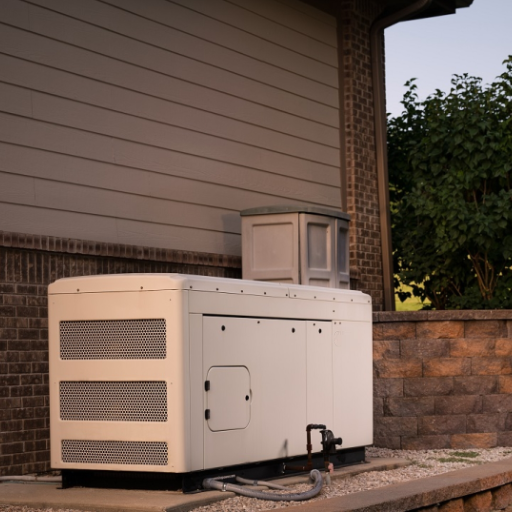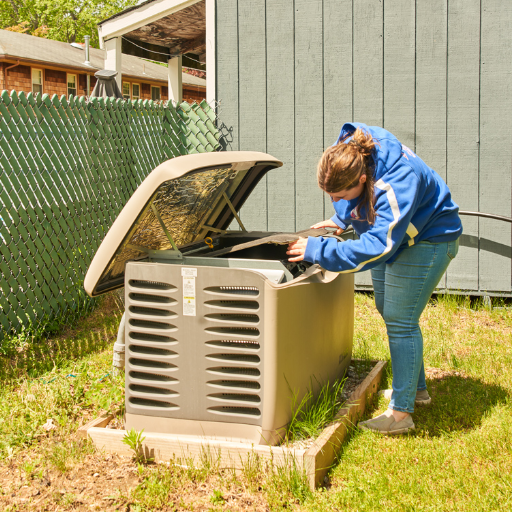In the unfortunate event of extreme weather or unforeseen power outages, backup generators are a vital resource for keeping your home running. The installation of a backup generator ensures that there is no power shortage, which keeps the most essential features of your home functioning and allows citizens to live a normal life. This manual has been written to educate you on the generator installation process, guiding you through the most critical considerations, safety measures, and other strategies for installing the generator efficiently and without unnecessary waste of time. For it does not matter if a home or a business is prepared to use a generator, this paper will help them learn not only how to install a generator properly, but also how to make an informed conclusion concerning the installation of a generator and even handle difficult situations in the field.
Benefits of Owning a Backup Generator
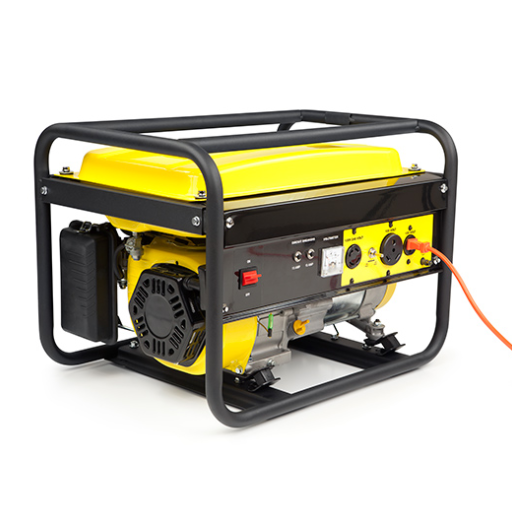
Uninterrupted Power Supply
And, where, during a power cut, it is impossible to maintain the functioning of systems such as lighting, heating, cooling, or security, the installation of an emergency electricity generator becomes imminent.
Protection of Essential Appliances
Generators ensure uninterrupted access to electricity when systems fail or power shortages occur, thereby preventing the potential damage to delicate machines and items.
Business Continuity
In commercial circles, a generator ensures that essential services are uninterrupted, thereby maintaining the company’s productivity and avoiding the cost of customer acquisition during prolonged power failures.
Enhanced Safety and Comfort
Stand-alone generators play a crucial role in protecting human life by providing the electric power necessary for essential services such as heating, ventilation, and air conditioning, among other critical necessities, during emergencies.
Property Value Increase
The value of homes can be increased by investing in generator’s installation, since it benefits the buyer by enabling him to operate the equipment without any setbacks.
Power During Outages
Thanks to advancements in the modern world, improvements in the efficiency of backup generators, increased reliability, and a decrease in their negative environmental impact have been observed. Current-day models have systems like Smart monitor, which allows for real-time troubleshooting, Knowledge of generator condition, and a system for predictive maintenance. These functions are crucial in minimizing downtime and reducing the likelihood of failures during blackouts. Another element is that, besides some old-fashioned generators, a significant number of the new and modern ones operate on natural gas or Propane gas, being more environmentally friendly and assisting in restoring the damage to the OSDS. Most importantly, every possible measure has been taken to avoid fire or any other disaster, such as loss of important information, by protecting the generators with an internal casing and soundproof walls. They also feature transfer switches that are used to supply loads in the event of a power outage, particularly in households and business institutions, and ensure compliance with new electricity laws, while also aiming to advance energy technologies.
Peace of Mind and Security
The use of backup electric power devices is a reliable solution in the event of emergency power outages. The situation is alarming, as it has been identified that power outages and electricity service interruptions are becoming increasingly frequent due to the network’s age, deterioration, and occasionally, unusually severe climatic conditions. This highlights the need for a source of uninterrupted power in the form of backup power. In power management, generators have undergone a significant overhaul. They are now equipped with advanced technology systems and sensors, enabling the user to detect when the generator requires servicing. This allows for quicker repairs before more significant problems arise. On a related note, the incorporation of smart appliance technology can enable even greater control and efficiency through remote command functions. This also allows the user to save electricity, as electronic equipment such as computers, heating, cooling, and other utilities can be monitored online and switched off, or the power can be isolated so that they do not consume as many kilowatts.
Increased Property Value
The establishment of a proficient electrical system in a home can be an effective way to enhance the property’s value, operation, and physical appearance. New real estate statistics suggest that residential properties with permanent emergency power sources are more popular than those without, even where a disaster is expected. In most disasters, the ability to live with a backup electricity source becomes a strategic alternative, not to prevent possible evasive actions, but to mitigate the consequences. For most people, this is a preventative measure rather than a proactive one – if something goes wrong, one is on edge and does not feel safe, even in a different sense. That’s why modern electricity generators are considered greenfield investments with rather lucrative returns; the latter can even be as high as 70% on some, provided the basis has utilized well-known companies such as Cummins, Caterpillar, or Komatsu in relation to more powerful gensets. It also enhances the property’s dynamics in the eyes of the user, portraying it as a well-built and proactive home.
Understanding Generator Systems
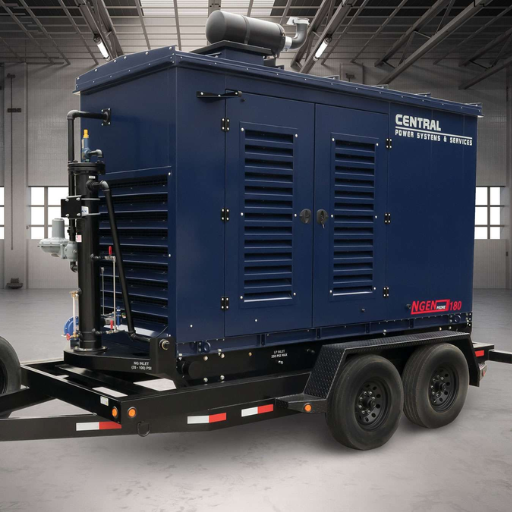
Most electric generating systems can be divided into two main sections: standby or portable generators. Portable generators are self-contained power systems used for short periods and can be manually linked to appliances or systems. Unlike them, standby generators are typically hard-wired into the electrical system and start automatically when a blackout occurs. These systems are often installed in connection with the home’s electrical setup and depend on natural gas or propane for fuel. Each of these systems provides different benefits. Portable diesel power generators are a cost-effective option that can be easily moved around; however, they do not operate independently and require manual control. On the other hand, standby gensets have more power; compared to portable gensets, they are more suitable for permanent usage. Which system to opt for is determined by the nature of power needed, affordability, and user comfort.
Types of Generators: Portable vs Standby Generators
| Feature | Portable Generators | Standby Generators |
|---|---|---|
| Power output | Lower, typically up to 10 kW | Higher, typically between 10-200 kW |
| Fuel type | Gasoline, propane, or diesel | Natural gas or propane |
| Installation | No installation, plug and play | Requires professional installation |
| Mobility | Lightweight and portable | Stationary, permanently installed |
| Startup method | Manual or electric start | Automatic with transfer switch |
| Runtime | Limited to fuel availability | Long runtime, continuous fuel supply |
| Maintenance | Simple to maintain | Requires regular professional servicing |
| Cost | Lower upfront cost ($500-$2,500) | Higher upfront cost ($2,000-$10,000+) |
| Power coverage | Powers essential appliances | Can power entire home |
| Noise levels | Louder, typically 60-90 dB | Quieter, typically 50-70 dB |
| Use case | Temporary power outages or worksites | Reliable backup for homes, businesses, or industries |
Choosing the Right Generator for Your Home
Deciding on which generator is suitable for your living space depends on various aspects that require an evaluation of these elements, ensuring it is capable of servicing and enduring your key use over an extended period. The initial consideration is the power output that any homeowner requires. One needs to calculate the wattage required for the operation of the most essential appliances, gadgets, and systems in case of an emergency power cut or during off-grid conditions. A typical refrigerator, for instance, may need about 600 to 800 watts of power, while an average central air conditioner may require several thousand watts.
Another element to consider is the fuel type. It is a fact that petrol generators are mostly found to be portable, making them ideal for use in relatively short-term situations or during emergencies, notwithstanding that they are expensive in operational terms and require some considerations regarding fuel safety. However, it is better to avoid these if one may select natural gas or diesel operated generators To be so that the environment is friendly, the best of course is a natural gas Generator and even better a propane gas generator which is clean burning and last longer.
With the pushes towards sustainable housing and building, renewable sources of power such as wind- or solar-powered generators are gaining popularity with homeowners. In fact, some solar generators on the market are working silently, and the best thing about them is that they can be used without polluting the environment and are compatible with battery storage when they have access to energy sources. Specifically, these do not produce any noise or emit any gases that can cause indoor pollution, and they are also compatible with a battery store. Unfortunately, they could be a big inconvenience when the sun is blocked out, as they are totally inoperable in overcast weather.
Apart from these factors, consider the time limit in which the generator will operate; the maintenance it will need, and its ease of installation. For instance, where a portable generator does not present a problem in terms of setting up and maintaining it, some complete-home standby systems offer additional benefits, such as a switch-on feature in the event of an electricity cut, which comes at an extra cost in terms of installation. After evaluating all the above propositions, homeowners can choose the best generator based on their energy use, environmental conservation needs, and budget.
Whole House vs. Partial Backup Solutions
| Key Point | Whole House Backup | Partial Backup |
|---|---|---|
| Coverage Area | Entire home | Select appliances only |
| Initial Cost | High | Lower |
| Installation Complexity | Requires professional setup | Simple or DIY possible |
| Power Output | High capacity | Limited capacity |
| Maintenance Requirements | Regular servicing needed | Minimal upkeep |
| Automatic Power Restoration | Yes, seamless switch-over | Typically manual or semi-automatic |
| Fuel Options | Propane, natural gas, or diesel | Gasoline, propane |
| Suitable for Long Outages | Yes, prolonged periods | No, short-term only |
| Noise Levels | Typically quieter units | Louder operation |
| Space Requirement | Requires dedicated space | Compact and portable |
| Operating Cost | Higher ongoing fuel costs | Lower operational expense |
| Ideal User | Large homes, heavy demands | Small homes, light loads |
The Installation Process for a Standby Generator
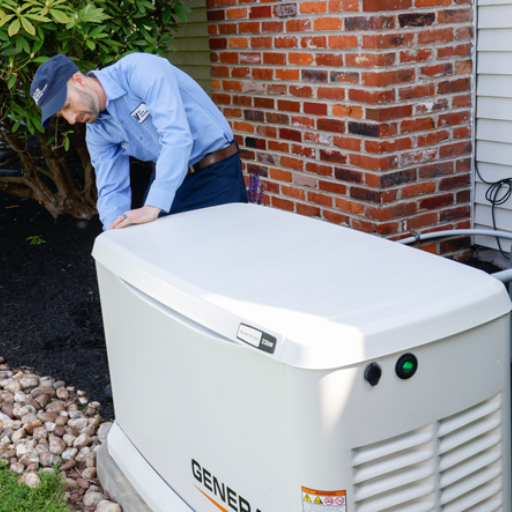
- 1Site Selection
Look for an area where you can build your new structure, ensuring it meets relevant building codes and has at least five feet of clearance from residential housing. - 2Concrete Pad Preparation
Most installations require a foundation made of a solid concrete pad, which firmly holds the generator in place and prevents it from vibrating during operation. - 3Electrical Connection
A generator can be connected to household power by a professional technician with the help of distribution panels and transfer switches, which can be configured to start the generator automatically without the technician’s assistance. - 4Fuel Line Setup
The next step is to connect the unit to a controlled fuel source, such as natural gas, propane, or diesel, according to the unit’s model. - 5System Testing
Once all the connections are in place, the installer will conduct a dry run to verify the generator’s behavior and ensure it can switch from utility mode to backup power in the event of a power failure.
Preparing for Installation
Proper installation processes and well-confirmed fluctuations over Solvit can ensure the smooth operation of a generator’s installation most of the time. Do not forget to check if the generator’s foundation is anchored correctly or if it still requires a shakeproof pad. For what it’s worth, don’t take any chances when it comes to safety measures. Select a location that has a suitable working area around it, and be mindful of all potential entrances into the building. The air content inside the building is vital; therefore, the generator should be placed away from windows, doors, and fresh air zones in a controlled, safe area. In cases where the ground is likely to flood or snow frequently, it is practical to choose a pavement-free and level area for the generator to be placed on.
After that, it is essential to check the power and fuel requirements of your preferred generator model. It is necessary to assess the power loads and make sure that the setup is within the allowable usage. As well as ascertain that the construction wiring is changed in accordance with the standards provided in the fire codes, as well as the electrical codes of all the applicable cities. On the fuel aspect, it is in your best interest to verify that the generator’s fuel delivery system is healthy, ensuring full delivery of fuel at the required level and pressure for which the equipment was designed. Whether your generator relies on natural gas or propane, one option is to arrange for the provision, and another is to call a plumber to have the connections objectively assessed and improved. These precautionary measures increase the chances of success in the generator’s installation and, at the same time, ensure the safe and effective functioning of the alternative energy accumulation in instances of need.
Tools Needed for Installation
To carry out an efficient installation of a backup power supply in your home, it is essential to have an appropriate set of tools that ensure the work is done successfully, while also taking all necessary safety precautions. The tools listed below are a must-have during installation:
- Wrenches and Socket Sets: Used to fasten the nuts and bolts and to connect various parts of the systems.
- Voltage Meter or Multimeter: Fundamental in examining the current running through the circuit in order to have a steady voltage supply at different points.
- Drill and Drill Bits: Essential in punching holes for assemblies that hold the generator unit in position.
- Wire Strippers and Cutters: Essential for creating a perfect connection after the wire has been stripped, they provide a clean and well-joined connection.
- Conduit Bender: Essential for properly securing electrical cabling within walls in compliance with the National Electrical Code.
- Level and Measuring Tape: Good for doing the installation nicely and square or satisfying the conditions of a specific clearance provided in the manufacturer’s manual.
- Transfer Switch Panel Tools: Special tools may be required for installing transfer switch panels, such as screwdrivers for working with the electrical panels.
- Pipe Wrenches (if applicable): Required for adjusting the gas piping to avoid the leakage of the gas, whereby the two metals have to be joined, especially when using natural gas or propane products.
- Personal Protective Equipment (PPE): Includes protective glasses, gloves, boots, or any other necessary special gear that is aimed at ensuring less risk of getting injured.
Safety Warning: Although they may seem insignificant, even slight negligence in using these tools when installing a structure, such as a building, can cause fatal personal injuries or result in property damage. Hence, the use of the most cutting-edge technology and best quality materials only means that there is a high degree of awareness towards safety enhancement.
Cost Considerations for Generator Installation
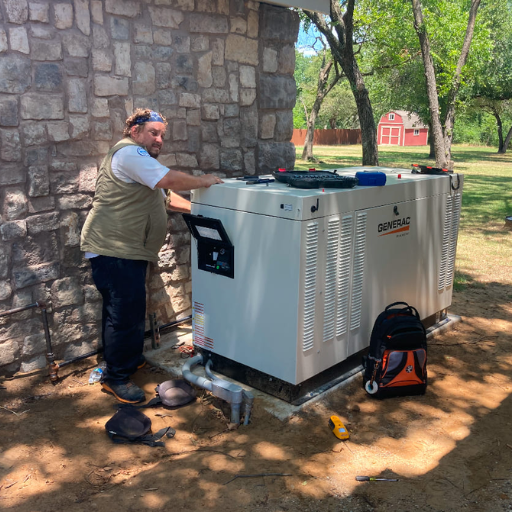
When it comes to installing a generator, the rates are not fixed and are based on several important factors. These factors include the type and size of the generator, labor costs, and whether any changes have to be made to the electrical system. Typically, the service costs from a professional breakdown range from $500 to $3,000, with no need for a standby generator purchase. The latter, larger generators typically have more charges for installation, including the cost of their use, the professionalism of the installation, and sometimes the relocation or mandatory inspections. The best policy is to compare rates from various electricity providers, especially those that are licensed, to ensure the most affordable prices are available in compliance with the country’s current laws. Also, keep in mind the future costs that may include maintenance and fuel requirements associated with the investment.
Price of the Generator
The expense of a generator is directly influenced by various factors such as the design, size, manufacturer, and technological characteristics of the generator in question. The manufacture of generators as evolved to suit diverse power needs in spite of the huge costs one may have to incur. Portable generators, for instance, are less expensive to purchase and can cost anywhere between $500 and $2500, depending on the size and manufacturer. On the other hand, the use of generators at home is somewhat expensive, and prices tend to start from $3,000 to over $10,000 for those who tend to have high-tech generator needs. However, the most costly generators, which are of industrial grade and intended for use in industries, can cost up to $20,000, all of which is determined by the required power output and configuration. In addition to this, one is also supposed to take into account other factors regarding the generator, such as fuel type: mostly seen as either natural gas, diesel or propane, and additional things like automatic load changes and Wi-Fi-controlled centralized monitoring systems, including soundproofing systems for exhaust noise, can also come with some © cost and others do not. It is necessary to note that such considerations will cause the variance in the cost of this tool in the built environment, bearing in mind that the installation cost of any generator is the most significant element, particularly when the requisite power supply is very high in the building, exceeding the intended power consumption.
Installation Fees and Labor Costs
The cost of installing and laboring a generator is dependent on various components, including the complexity of the process, prevailing wage rates, and site-specific requirements that must be met. The cost of installing a standard-size generator in residential homes typically ranges from $3,000 to $7,000. Still, it can be several thousand dollars more for commercial or industrial equivalents, as the installation is more labor-intensive due to the additional wiring and modifications required on-site. Still, it will make sense to consider factors such as running cable in trenches, pouring a concrete slab, and also taking into account general compliance with construction codes in the area. It is best to seek the services of a qualified electrical engineer or contractor who can guarantee that all systems are installed safely and as required and are operational. A careful and practical approach during installations helps mitigate risks and promote dependable performance in the long run of the generator systems concerned.
Ongoing Costs and Maintenance Expenses
Generator system costs can be generally divided into three areas: fuel costs, regular maintenance expenses, and the cost of possible repairs. As far as the cost of fuel is concerned, the function of the generator, the load, and the fuel the engine will operate with are only some of the factors responsible for determining the fuel consumption. Diesel and natural gas are the two main types of fuel consumed by most generators. In reality, a 20 kW artificial generator with half the rated load may peak at a consumption rate of 1.6 gallons of diesel or 185 cubic feet of natural gas per hour, depending on the appropriate fuel utilization parameters.
Ensuring continuity of service and performance depends on the coordination of regular maintenance checks and intervals. This includes paperwork such as recording time slots and the number of kilometers covered, as well as all costs incurred for recording. This typically involves replacing used filters, topping up the coolant, and inspecting the condition of the batteries. Using a professional generator servicing team should be applied to every generator after every 100 to 200 operating hours, especially for commercial generators, such as those in hospitality. Typically, the cost of this service ranges between $250 and $600, depending on the complexity of the generator.
In many cases, these problems can also result from normal wear and tear or the failure of parts. For instance, it is not uncommon for generators to be replaced with new ones due to problems with alternators or unnecessary alarm issues on the control panel, which may prevent the diesel engine from starting. When qualified technicians are called on site, it is evident that this is just as dangerous as trying to increase the fuel pressure in the pump to start faster. Since repairs can cause damage worth several hundred to several thousand dollars, the majority of commercial entities do not wish to experience frequent issues with their gensets. With such a plan and care for early signs of problems in the system, expenses in terms of repair charges will be reduced, while also allowing the generator to operate for a longer duration.
Safety Tips for Installing and Operating Your Generator
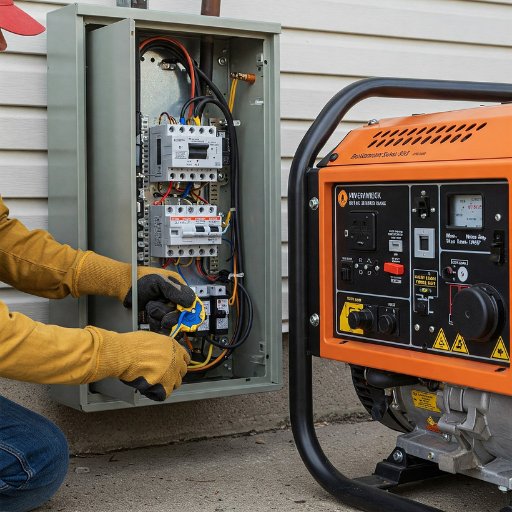
Choose a Proper Location
Move the generator instead of trying to fix it. Place it where there is sufficient airflow and at least twenty feet from any exit, ensuring the installer’s path is not obstructed by logjams in the door openings. This is to preclude excessive accumulation of emissions inside the enclosures.
Use a Transfer Switch
Connect the generator within a hybrid interphase connection, which is an interphase, e.g., conducted by electricians, and in accordance with the procedures adopted, e.g., preventive safety measures as regards protection against backflow, is highly recommended.
Keep the Generator Dry
Keep the generator away from any free-entered running water and do not expose it to the weather, especially when it is raining. Cover the device or seek help in providing shelter if necessary.
Fuel Handling
Store fuel in safe containers, removed from any sources of heat, when it is refilled. Only do this after the generator has been turned off and cooled, to reduce the risk of fire occurrence.
Follow Manufacturer Guidelines
Always consult and abide by the operation manual and maintenance manual attached to this generator to ensure it is used safely and effectively.
Install Carbon Monoxide Alarms
Make it a habit to install carbon monoxide detectors in your home, as they will provide early warning signals of high carbon monoxide levels in the household.
Understanding the Transfer Switch
Every emergency power installation requires the incorporation of a transfer switch; this element is crucial for enabling users to switch the electrical load from the utility company power source to the backup source of the genset without synchronization. Currently, there are two types of transfer switches primarily: one is automatic and the other is manual. Manual transfer switches are switchgear that require the user to switch the source of the load physically. In contrast, automatic transfer switches detect any outage and automatically switch the building to generator power without manual intervention in the event of an urgent or emergency situation.
A transfer switch also allows the user to control which circuits in a building will be powered in the case of a power outage, this is particular useful in the event of an emergency, making sure the most crucial loads such as heating and cooling, medical equipment are functioning. Transfer switches should be correctly installed for reasons of safety and compliance with codes. It is essential to ensure the switch is correctly sized and properly installed by an electrical professional according to the household’s power needs.
Safe Gas Line Installation
Properly securing gas lines is one of the most significant factors in the gas installation process, as it affects factors such as system integrity, leakage, and adherence to standards. Moreover, materials such as black pipe or CSST are likely to be used in such installations, as they are intended to operate under high compressed conditions and last as long as possible, since they are particularly resistant to corrosion. Gas line sizing must be accurate to avoid pressure loss and ensure timely delivery of gas to the evaluated appliances, considering the space parameters of the gas piping system from the gas meter to the annular equipment.
Moreover, it is crucial to ensure that every single connection has been made using an approved method, for example, by using the appropriate thread sealant or gas line tape to eliminate any chances of leaks completely. The system should be blown down after obtaining the previous results to check its operation under pressure using a manometer, ensuring that there are no leaks. It is also essential to provide the installation with special controlling valves in readily accessible and convenient places. To keep everything and everyone safe, any gas piping of any kind should be strictly kept away from or run within power.
All national and international requirements and codes of good conduct, such as the International Fuel Gas Code, are mandatory for the installation of gas and other heating systems. Such works should never be left to underqualified handymen, and every installation, particularly one involving lethal gases, should be performed under the supervision of an expert in the field. Standard property management agreements that every landlord must execute should outline additional procedures and a schedule for periodic maintenance and inspections of the rented premises.
Reference Sources
1. Feasibility Study for Power Generation Using Off-Grid Energy Systems
- Key Findings:
- A hybrid system combining micro-hydro, solar PV, diesel generators, and battery storage was found to be the most cost-effective and reliable for rural electrification in Ethiopia.
- The system’s energy mix: 79% from hydropower, 20% from solar PV, and 1% from diesel generators.
2. Identification of Hazards and Risk Assessment for a 40kVA Diesel Generator
- Key Findings:
- The study identified occupational hazards associated with the installation, operation, and maintenance of diesel-powered generators.
- Five major tasks were analyzed, revealing varying degrees of risks, including mechanical injuries and exposure to harmful emissions.
Frequently Asked Questions (FAQs)
Q: How do I install a transfer switch with my generator?
A: When you wish to work with multiple power sources in your residence and use a power supply generator, you should first strive to buy your own power generator. Typically, the installation involves integrating the transfer switch into the power network and then connecting the wires to the generator. It is of the essence to recruit the services of an electrical professional who has the sanctioned permits to avoid mishaps of any kind. This is all about the transfer switch that must be connected correctly to prevent any feedback of power from the generator back into the grid, which is undesirable. After all is set and done, power can easily be switched from the utility to the generator’s power when the lights go out.
Q: What do I need to know about installing a home standby generator?
A: In the event of the installation of a home standby generator, it becomes necessary to take into account the generator’s capability to supply power to devices that include heating and cooling systems, kitchen and other appliances, and all types of residential lights. It is essential also to consider the appliances and the whole building at risk that require a generator. In this case, some enquiries need to be made regarding the consumers of the power to determine how much load the generator will require. Is a portable generator enough, or should one purchase a full-house generator? Installation will also include the transfer switch, which ensures that when power from the utility is restored, the attachment will automatically reconnect to the national grid.
Q: What generator do you need for a whole house installation?
A: Getting the right generator for a whole-house installation will depend on the power needs of the house. You can turn to registered electricians to assess your electrical charges and help you determine whether a 14kW Generac generator or another design is necessary. The most critical parameters are the size of the area you want to cover and the energy required to run the most common electricity-using devices within the house. In this exercise, it is crucial to note the compatibility with the prevailing gas service and whether any modifications to the gas lines are necessary for the installation to proceed. Getting the right sizing is crucial, as it determines whether the demand for power in the house can be met in the event of a blackout.



